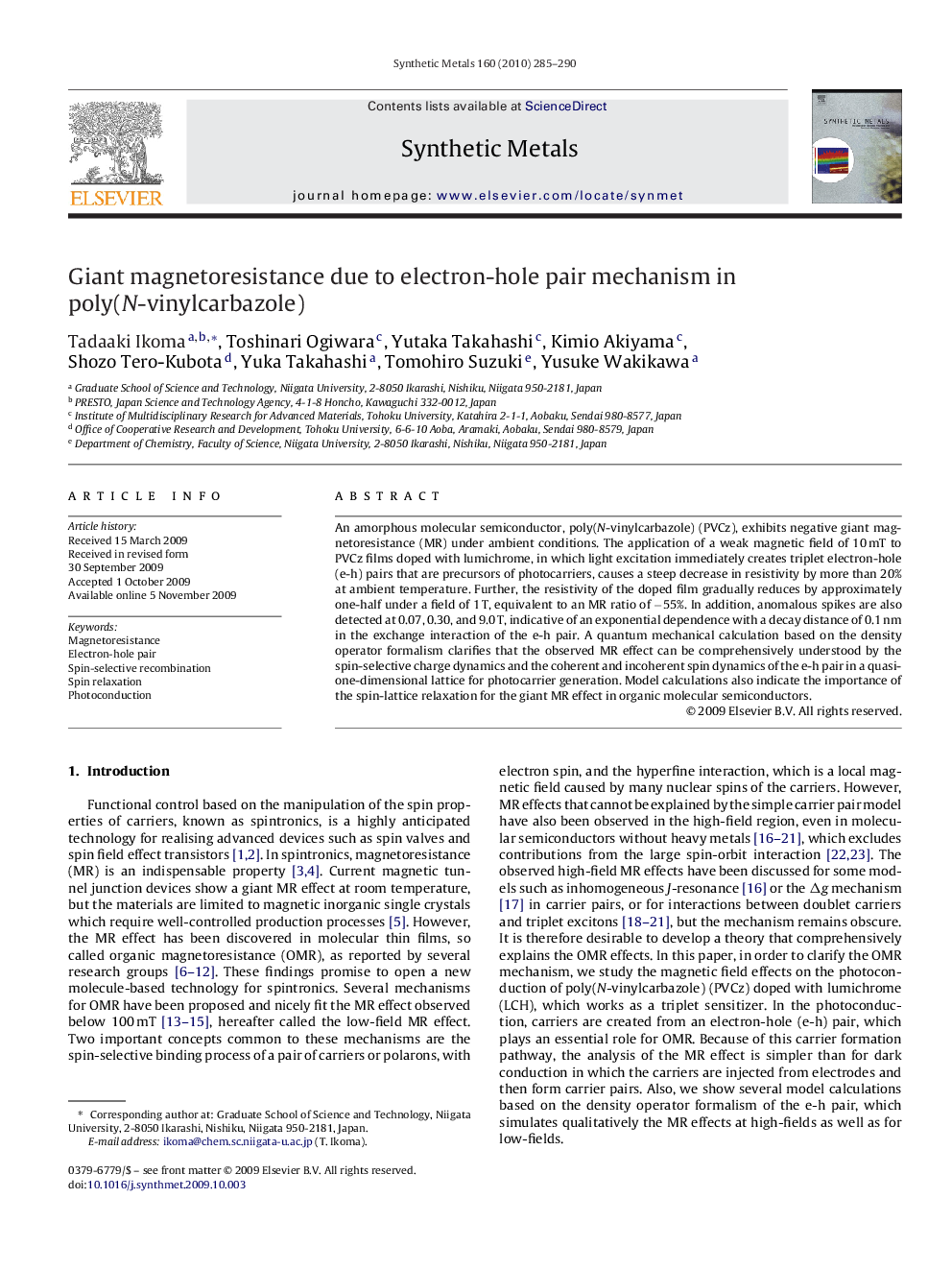| Article ID | Journal | Published Year | Pages | File Type |
|---|---|---|---|---|
| 1442928 | Synthetic Metals | 2010 | 6 Pages |
An amorphous molecular semiconductor, poly(N-vinylcarbazole) (PVCz), exhibits negative giant magnetoresistance (MR) under ambient conditions. The application of a weak magnetic field of 10 mT to PVCz films doped with lumichrome, in which light excitation immediately creates triplet electron-hole (e-h) pairs that are precursors of photocarriers, causes a steep decrease in resistivity by more than 20% at ambient temperature. Further, the resistivity of the doped film gradually reduces by approximately one-half under a field of 1 T, equivalent to an MR ratio of −55%. In addition, anomalous spikes are also detected at 0.07, 0.30, and 9.0 T, indicative of an exponential dependence with a decay distance of 0.1 nm in the exchange interaction of the e-h pair. A quantum mechanical calculation based on the density operator formalism clarifies that the observed MR effect can be comprehensively understood by the spin-selective charge dynamics and the coherent and incoherent spin dynamics of the e-h pair in a quasi-one-dimensional lattice for photocarrier generation. Model calculations also indicate the importance of the spin-lattice relaxation for the giant MR effect in organic molecular semiconductors.
